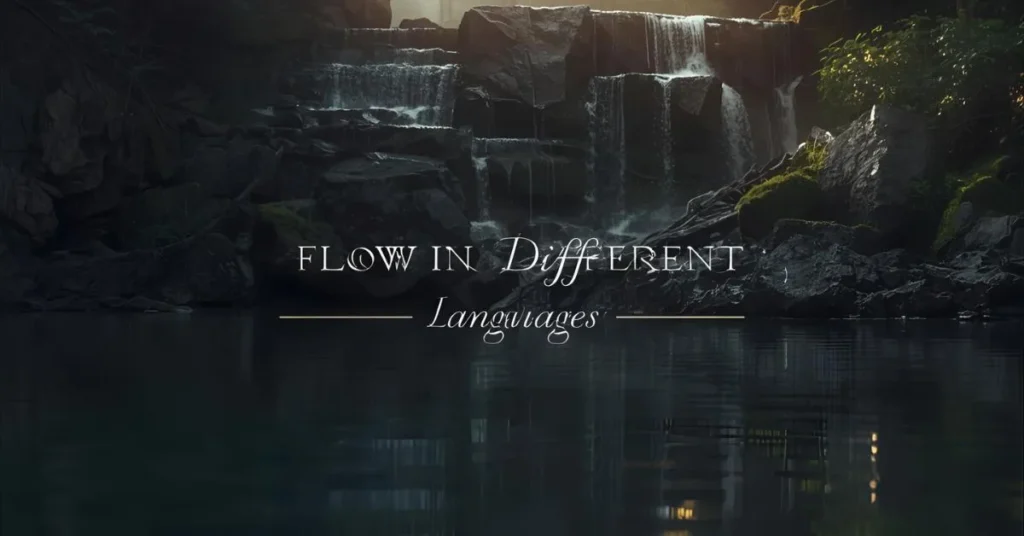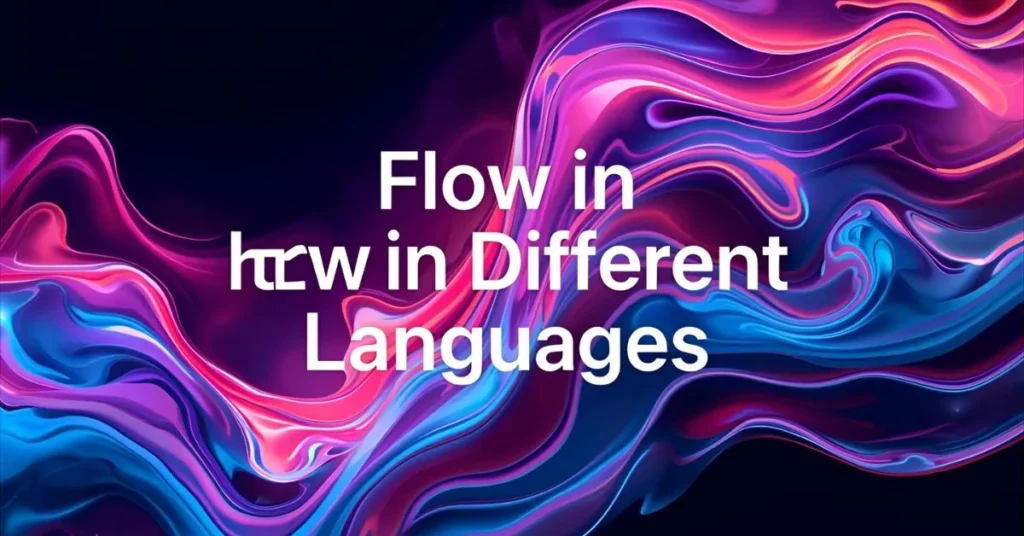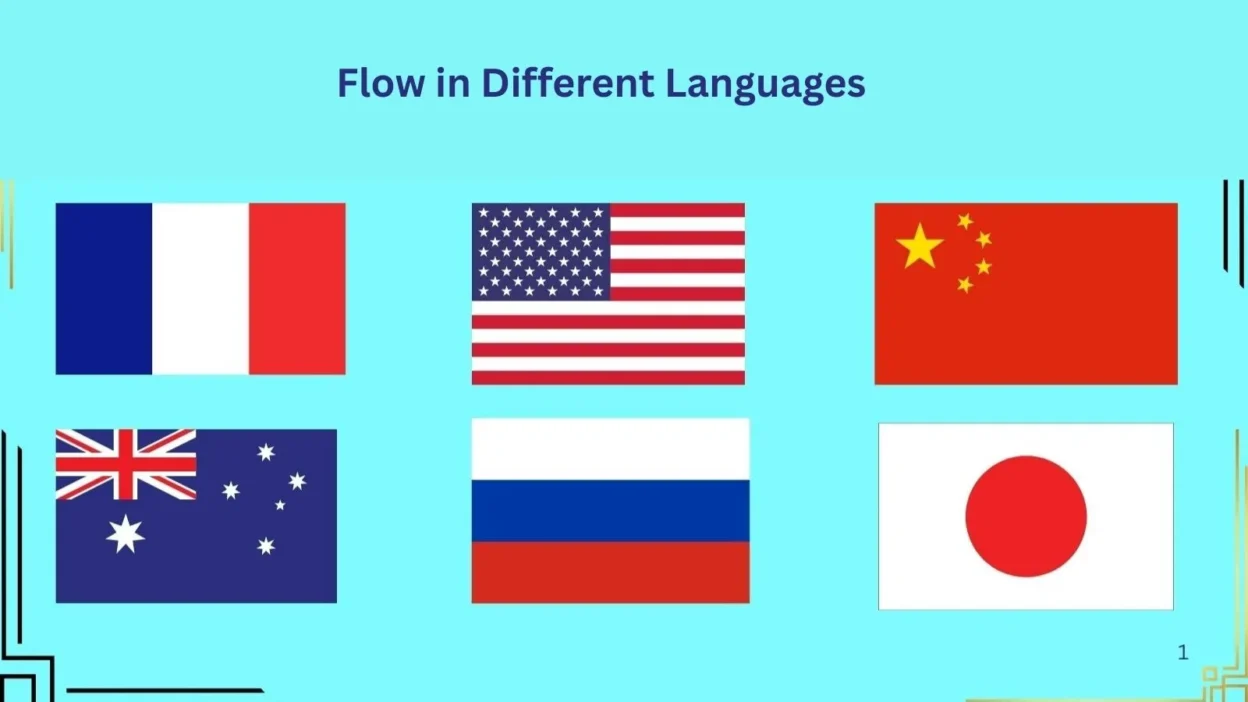When someone looks up the word “flow” in different languages, it usually comes from a deep desire to connect, communicate, or express something fluid, smooth, or continuous—whether in conversations, creative writing, or cross-cultural communication.
You might be an artist trying to describe your creative flow, a speaker giving a motivational talk, a traveler trying to express the flow of a river, or even a mindfulness coach describing the flow state in various languages for your global audience.
If you’re here, you’re probably wondering:
- What does flow mean in other languages?
- How can I use the word correctly?
- Can I express flow in both literal (like water) and abstract (like emotions or creativity) ways across cultures?
You’ve come to the right place. This article solves that problem by providing:
- The meaning of the word “flow”
- How it’s used in various contexts
- Its translation in different languages
- And real examples you can use in conversation.
What Does “Flow” Mean?

The word “flow” has multiple meanings in English:
- As a verb: to move along in a steady, continuous stream (e.g., The river flows to the sea.)
- As a noun: a smooth, uninterrupted movement or process (e.g., I lost track of time while in the creative flow.)
It can be used in:
- Nature: Water flows, lava flows
- Emotions or energy: The flow of love, energy, or music
- Speech or writing: The flow of ideas
- Mindfulness & psychology: “Flow state” — a mental state of full immersion and focus
Flow in Different Languages 🌐

| Language | Word for “Flow” | Pronunciation | Usage Example |
| Spanish | Flujo | FLOO-ho | El flujo del agua es constante. (The flow of water is constant.) |
| French | Flux | floo | Le flux d’énergie est positif. (The flow of energy is positive.) |
| German | Fluss / Fließen | floos / FLEE-sen | Der Fluss fließt schnell. (The river flows fast.) |
| Italian | Flusso | FLOOS-so | Il flusso delle idee era continuo. (The flow of ideas was continuous.) |
| Portuguese | Fluxo | FLOOK-so | O fluxo da conversa foi natural. (The flow of the conversation was natural.) |
| Japanese | 流れ (Nagare) | nah-gah-reh | 水の流れが美しい。 (The flow of water is beautiful.) |
| Chinese (Mandarin) | 流动 (Liúdòng) | lyoh-dohng | 能量在身体中流动。 (Energy flows through the body.) |
| Hindi | प्रवाह (Pravāh) | pruh-vaah | नदी का प्रवाह तेज़ है। (The flow of the river is strong.) |
| Arabic | تدفق (Tadaffuq) | ta-da-ffuq | تدفق الماء في الجدول. (The water flowed in the stream.) |
| Russian | Поток (Potok) | pah-tok | Поток мыслей не останавливается. (The flow of thoughts doesn’t stop.) |
| Korean | 흐름 (Heureum) | heuh-reum | 감정의 흐름을 따라가세요. (Follow the flow of emotions.) |
| Greek | Ροή (Roí) | roh-EE | Η ροή του νερού είναι ομαλή. (The flow of water is smooth.) |
| Turkish | Akış | ah-KUHSH | Zamanın akışı hızlıydı. (The flow of time was fast.) |
| Swedish | Flöde | FLUH-deh | Ett konstant flöde av idéer. (A constant flow of ideas.) |
How to Use “Flow” in Sentences

Here are example sentences showing how you might use “flow” in real-life conversation or writing:
- “Stay in the flow and let your creativity guide you.”
- “The flow of traffic was unusually smooth this morning.”
- “I love the way this poem flows from one line to another.”
- “She entered a flow state during meditation.”
- “Let your words flow naturally when speaking.”
- “Observe how water flows through the cracks in the rocks.”
- “There was a peaceful flow of energy in the room.”
- “Our conversation had a natural flow to it.”
- “He lost the flow of the presentation.”
- “Music helps me get into a creative flow.”
Why Knowing “Flow” in Other Languages Matters

Understanding how to say and use “flow” in other languages is especially valuable for:
- Travelers & explorers describing natural scenery
- Spiritual & mindfulness coaches teaching cross-culturally
- Writers & poets seeking lyrical variety
- Translators & interpreters
- Language learners expanding vocabulary in multiple dimensions (literal and metaphorical)
Conclusion:
Language, like water, is meant to flow—between people, across cultures, and through time. By understanding the word flow in different languages, you’re opening up to more than just vocabulary; you’re stepping into a deeper connection with meaning and movement in communication.
Now that you know how to say and use “flow” in many languages, you can express this powerful concept—whether you’re talking about rivers, thoughts, emotions, or inspiration



